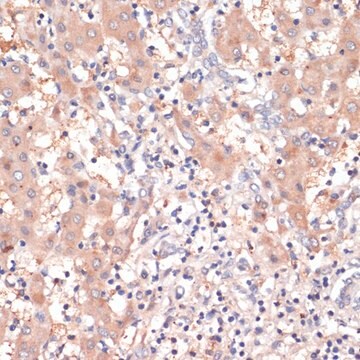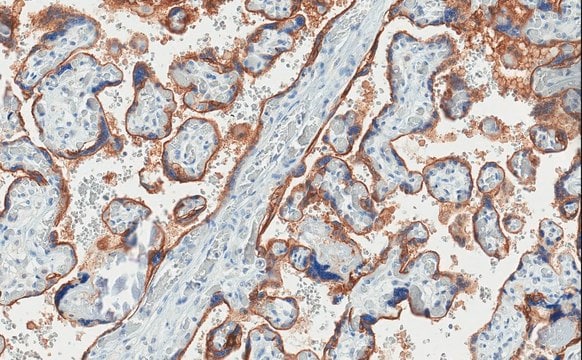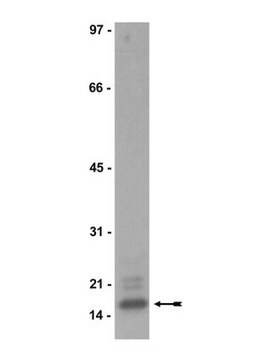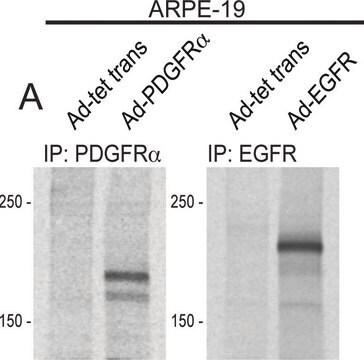05-1047
Anti-EGFR (cytoplasmic domain) Antibody, clone 8G6.2
clone 8G6.2, from mouse
Sinónimos:
Receptor tyrosine-protein kinase ErbB-1, avian erythroblastic leukemia viral (v-erb-b) oncogene
homolog, cell growth inhibiting protein 40, cell proliferation-inducing protein 61, epidermal growth factor receptor, epidermal growth factor recepto
About This Item
Productos recomendados
origen biológico
mouse
Nivel de calidad
forma del anticuerpo
purified antibody
tipo de anticuerpo
primary antibodies
clon
8G6.2, monoclonal
reactividad de especies
rat, mouse, human
técnicas
immunocytochemistry: suitable
immunohistochemistry: suitable
immunoprecipitation (IP): suitable
western blot: 1:2,000 using A431 cell lysate (used to detect EGFR)
western blot: suitable
isotipo
IgG1κ
Nº de acceso NCBI
Nº de acceso UniProt
Condiciones de envío
wet ice
modificación del objetivo postraduccional
unmodified
Información sobre el gen
human ... EGFR(1956)
mouse ... Egfr(13649)
rat ... Egfr(24329)
Descripción general
Especificidad
Inmunógeno
Aplicación
A431 cells were grown, fixed, permeablized, and stained with anti-EGFR, clone 8G6.2
Confocal Immunocytochemistry Analysis:
A431 cells were grown, fixed, permeablized, and stained with anti-EGFR, clone 8G6.2
Immunoprecipitation:
100 μg of A431 whole cell lysate was lysed in RIPA buffer and immunoprecipitated (IP) with 5 μg of Anti-EGFR, cytoplasmic domain, clone 8G6.2
Immunohistochemistry Analysis:
Tissue was stained with anti-EGFR, cytoplasmic domain, clone 8G6.2 at a 1:100 dilution and IHC-Select Detection with HRP-DAB reagents.
Calidad
Western Blot Analysis:
1:2,000 dilution of this antibody was used to detect EGFR in A431 cell lysate.
Descripción de destino
Ligadura / enlace
Forma física
Otras notas
¿No encuentra el producto adecuado?
Pruebe nuestro Herramienta de selección de productos.
Opcional
Código de clase de almacenamiento
12 - Non Combustible Liquids
Clase de riesgo para el agua (WGK)
WGK 1
Punto de inflamabilidad (°F)
Not applicable
Punto de inflamabilidad (°C)
Not applicable
Certificados de análisis (COA)
Busque Certificados de análisis (COA) introduciendo el número de lote del producto. Los números de lote se encuentran en la etiqueta del producto después de las palabras «Lot» o «Batch»
¿Ya tiene este producto?
Encuentre la documentación para los productos que ha comprado recientemente en la Biblioteca de documentos.
Nuestro equipo de científicos tiene experiencia en todas las áreas de investigación: Ciencias de la vida, Ciencia de los materiales, Síntesis química, Cromatografía, Analítica y muchas otras.
Póngase en contacto con el Servicio técnico








